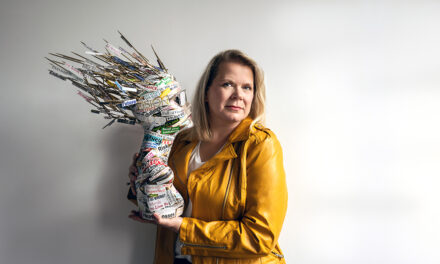With so many charities on the local and national level supporting a dizzying array of worthy causes, even the most well-intentioned philanthropists need a little direction. The Princeton Area Community Foundation, led by its board of community leaders, evaluates local nonprofits and charities so it can invest and administer funds, award grants and scholarships, and provide a variety of services to promote philanthropy and keep charitable giving flowing locally. The Community Foundation does a lot of the heavy lifting, helping people looking to give determine where their dollars will make the most impact locally.
One of the Community Foundation’s funds, the Fund for Women and Girls, was started in 1998 by donors who were concerned about issues impacting women and girls in Mercer County.
In 2009, it became a giving circle, so members donate to it each year, which helps provide stability, says Michelle Cash, vice president, grants and programs since 2010. “The group solicits
proposals, learns about the grantees, and they make grantmaking decisions,” Cash says.
In an effort to further strengthen the fund, a few years ago, the fund members commissioned Dr. Sandra Gibson, a professor at the College of New Jersey to survey the status of women and girls in Mercer County, which became known as “Shaping the Future: Women and Girls in Central New Jersey.” The study found that women and girls in Mercer County were at risk, facing social, economic, and health obstacles. “From that study, we chose four areas where we felt we could make a difference. In 2013, we focused on sexual education, domestic violence, childcare, and leadership and mentoring,” Cash says. “We decided those were the issues that showed real holes and some promise for impact. We’ve been using the guidelines to focus on these four areas and been making grants based on that.”
This year, the Fund for Women and Girls awarded $115,885 to six grantees (see sidebar), which all fit the same criteria. “We wanted to make sure we shared this information publicly,” Cash says. “Any donor or any nonprofit looking to shape their own work can use this data. We share what we know so everyone can benefit from it.”
Philanthropy 101: Choosing a Nonprofit to Dedicate Time and Money
What’s the most common reason nonprofits fail?
One of the biggest issues in nonprofit work is that most organizations are very small and operate on a very grassroots basis, so they don’t always have the resources they need to really scan the environment around them, so there can be duplication in the nonprofit world. They are so stressed with things that have to get done every day that they don’t have the capacity to be more outwardly focused.
People who work in the nonprofit world work incredibly hard, but they often don’t get to think about what they do. The business side often falls by the wayside because the needs are so immediate.
If you want to start a nonprofit, what should you consider?
When people say they want to start a nonprofit, I say do that as a last resort. I say first look to see if you can be part of a nonprofit that already exists and make it better and stronger. If you know nobody is doing what you’re doing and you want to start a nonprofit to accomplish a specific mission, then you need to understand you’re starting a business. That could potentially take away from what you want to do. It’s so hard to find the time, energy, and capacity to work at making what you do better.
If you want to donate to a nonprofit, what do you need to consider?
As far as donors are concerned, think deeply first about what you care about. You want to think very intentionally about the change you’d like to see in the world and what really matters to you. That will help you direct your dollars and effort in a more effective way.
The most impactful philanthropists are not just check writers. The donation is always important, but when you get to know an organization, you can be an advocate out there in the community as well. You can start to build a movement that can make a huge difference.
How can you find out what is happening behind the scenes?
Read their literature, and ask if you can visit. Tax returns of every nonprofit are available online for free (guidestar.org). Search for any nonprofit, and look for their financial history. Here’s one red flag: if an organization looks like they’ve had a lot of instability year over year, that’s something you might want to look into a little further. If there’s something in there you don’t understand, call the organization and ask for some clarification.








